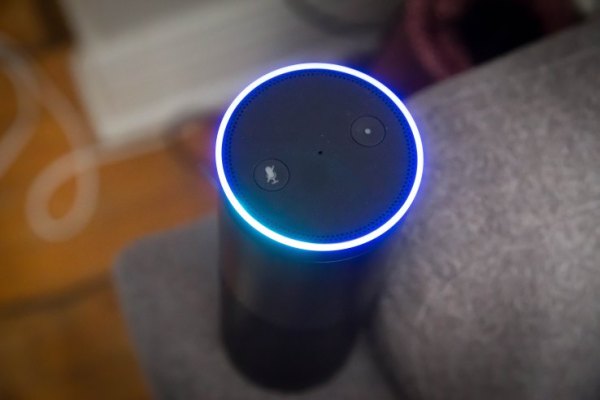To the unassuming eye, the Amazon Echo looks like a newfangled stereo speaker, and so it’s no surprise that music is one of the more popular applications for Amazon’s connected, voice-activated, AI device. From today, music on Echo is getting a boost, with a new direct integration between Spotify and Amazon Echo.
“Now playing your favorite music from Spotify is as easy as asking Alexa,” said Toni Reid, Director, Amazon Alexa, in a statement. “Music is one of the most popular features on Amazon Echo, and Spotify has been one of the most requested services, so we’re excited to bring it to our customers today.”
Users who are Spotify Premium subscribers, who also have an Amazon Echo, will now be able to command Echo’s virtual assistant Alexa to “play Spotify” and call up their Spotify playlists, as well as artists or genres on the streaming service.
“We’re extremely pleased that Spotify Premium subscribers can now listen to their favorite music on Amazon Echo,” said Ian Geller, Global Head of Hardware at Spotify in a statement. “Creating innovative experiences is core to our mission. We know our users will love controlling music with their voice at home.”
Initially the service will be U.S.-only, where the Amazon Echo is being sold, with no additional details about further rollouts, says a Spotify spokesperson. This has been one of the most-requested additions from Echo customers, and Spotify is a global service, so my guess is that when Amazon does expand the Echo to other markets, the Spotify integration will follow.
Amazon Echo also works with a Spotify Connect integration: Spotify users can select the Echo from their app to switch control from one to the other.
Putting Spotify together with Amazon Echo is an example of mutual marketing in action.
For Amazon Echo, it could drive more sales of the product. There is a natural affinity for using the device to listen to music, and if you’re the kind of consumer who is investing in an Echo there is a strong chance you also stream digital music, too.
Amazon Echo is already integrated with several other streaming services — Amazon Music, Prime Music, iHeartRadio, Pandora, and TuneIn. But Spotify is the market leader globally, with 100 million users and just over 28 million of those paying. Having the ability to play Spotify on the device could be the tipping point for yet more Echo purchases, or at least to help give it more mainstream appeal.
This also fits in with the wider strategy Amazon has been applying to Echo. As with its Kindle tablets and e-readers and other hardware, Amazon has not revealed any sales figures for its $180 Echo devices to date. But it has been aggressively adding more integrations to improve the device’s usefulness — and presumably help feed the machine-learning algorithms that run Alexa and potentially its many other services.
These have included very essential actions like the ability to order pizza, as well as create shopping and other to-do lists, access news and other information, set alarms and more.
For Spotify, the fact that Echo streaming is a Premium feature is interesting: it essentially gives consumers who pay for the Premium tier another benefit for doing so. If you are already an Echo owner, the fact that you can stream Spotify over the device could become the reason you decide to finally switch from being a free Spotify user to one who pays.
Today, Spotify’s Premium tier, which costs $9.99 per month, gives users ad-free listening, higher audio quality, offline playback and other features.
And this also fits into a wider Spotify strategy, too: the company may be the biggest streaming music provider today in terms of active users, but it’s facing a lot of heavy competition from the likes of Apple and Google as well as other pure-play streaming companies like Deezer — which, incidentally, today made its own hardware inroads in a new deal with Huawei for its service to be embedded on its new Honor handsets.
But streaming music is, in a way, a commodity, with precious little differentiation in terms of basic catalogs. So, one way that Spotify can make sure its users stay loyal, or migrate, to its service above the others is by the services it builds around the catalog — be it in the form of playlists, or exclusive features, or simple convenience factor.
In that vein, a level of ubiquity across popular hardware is a must.
